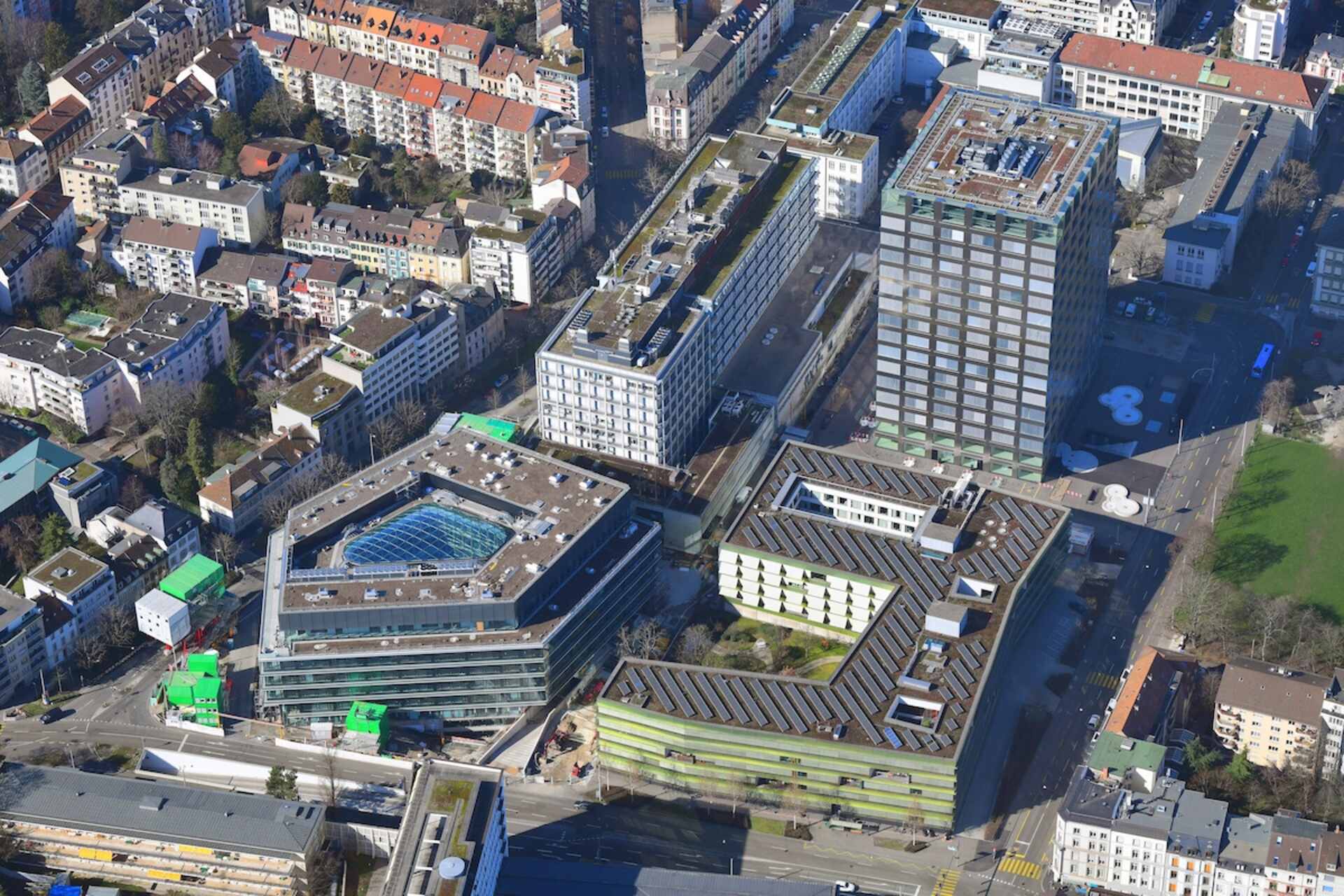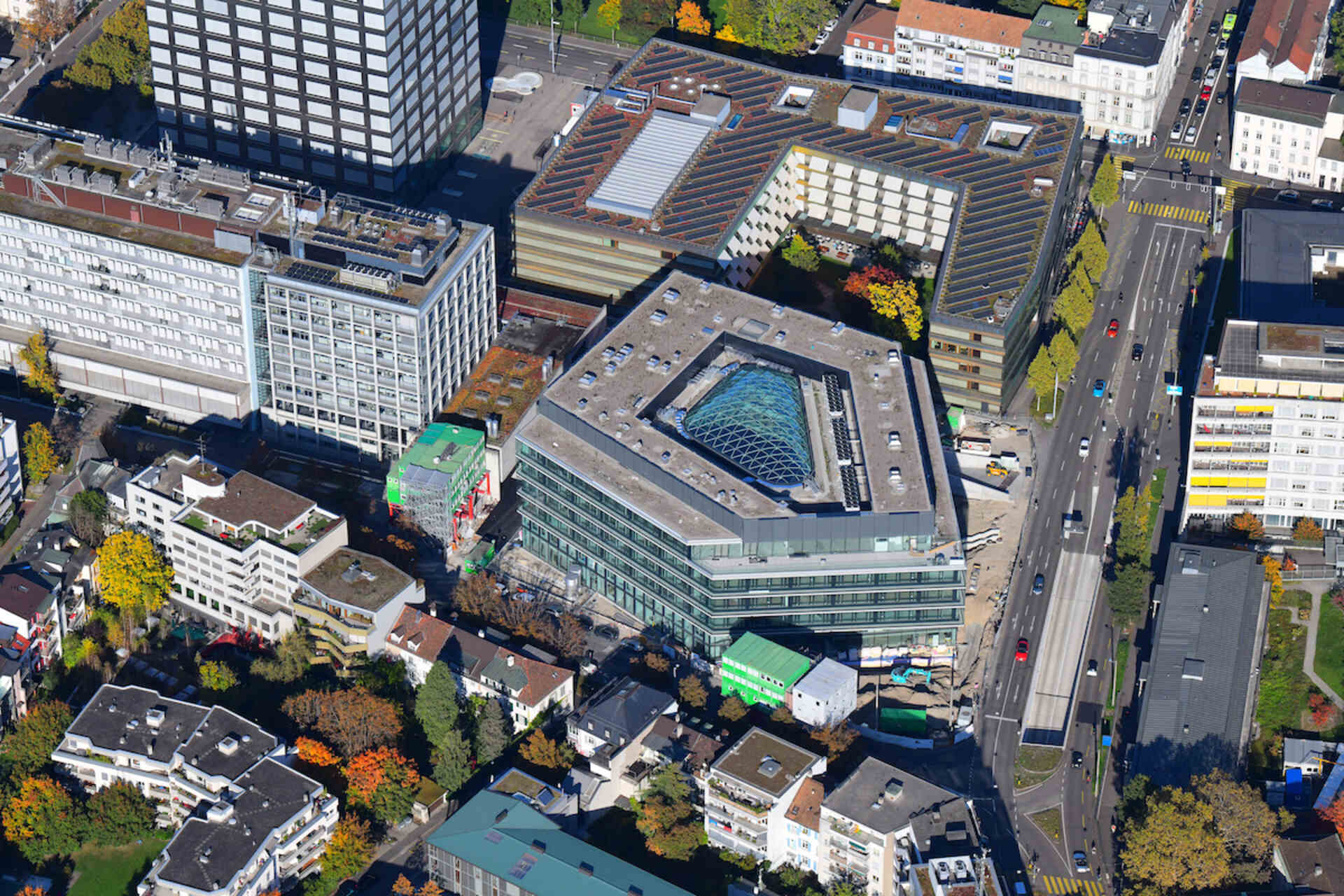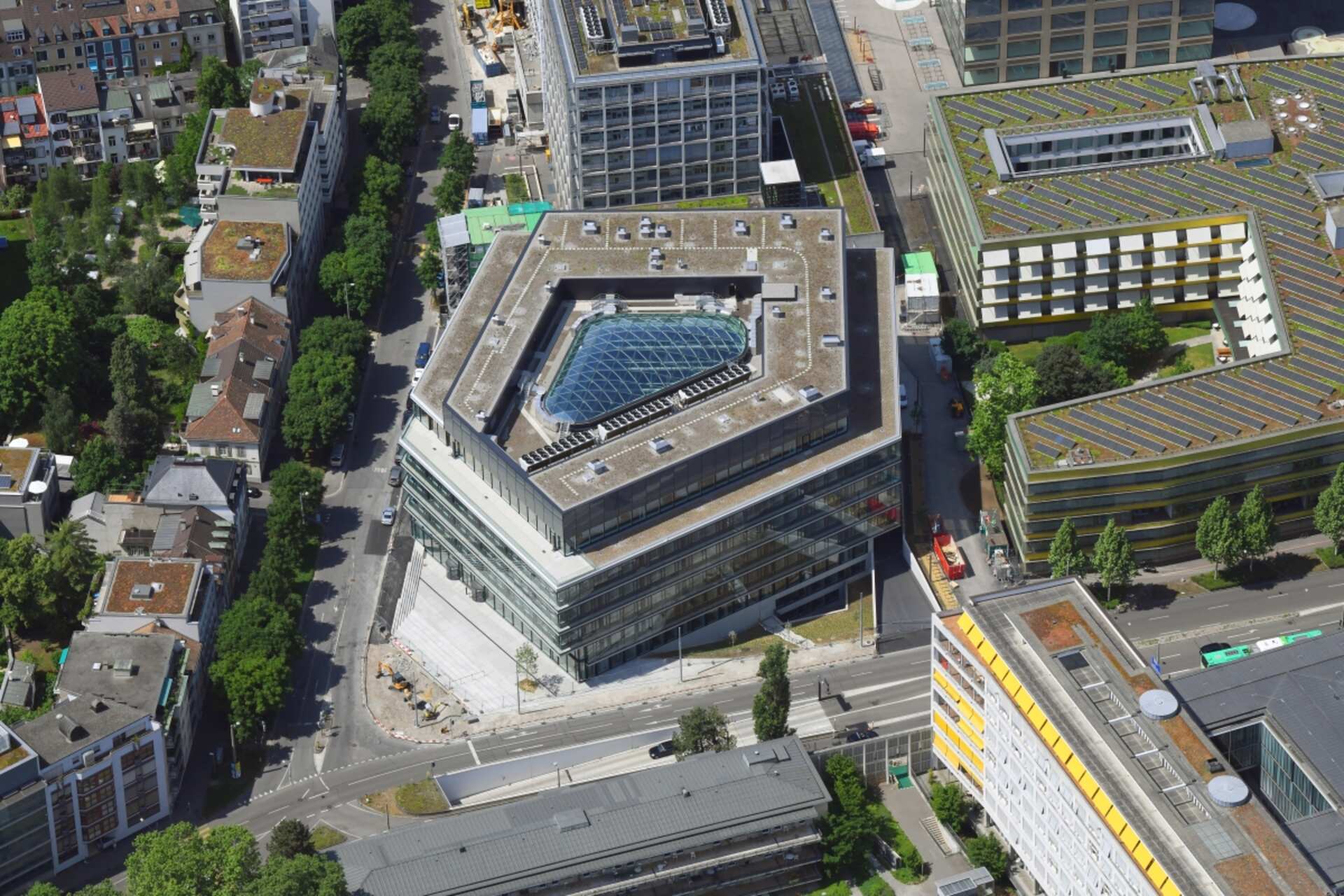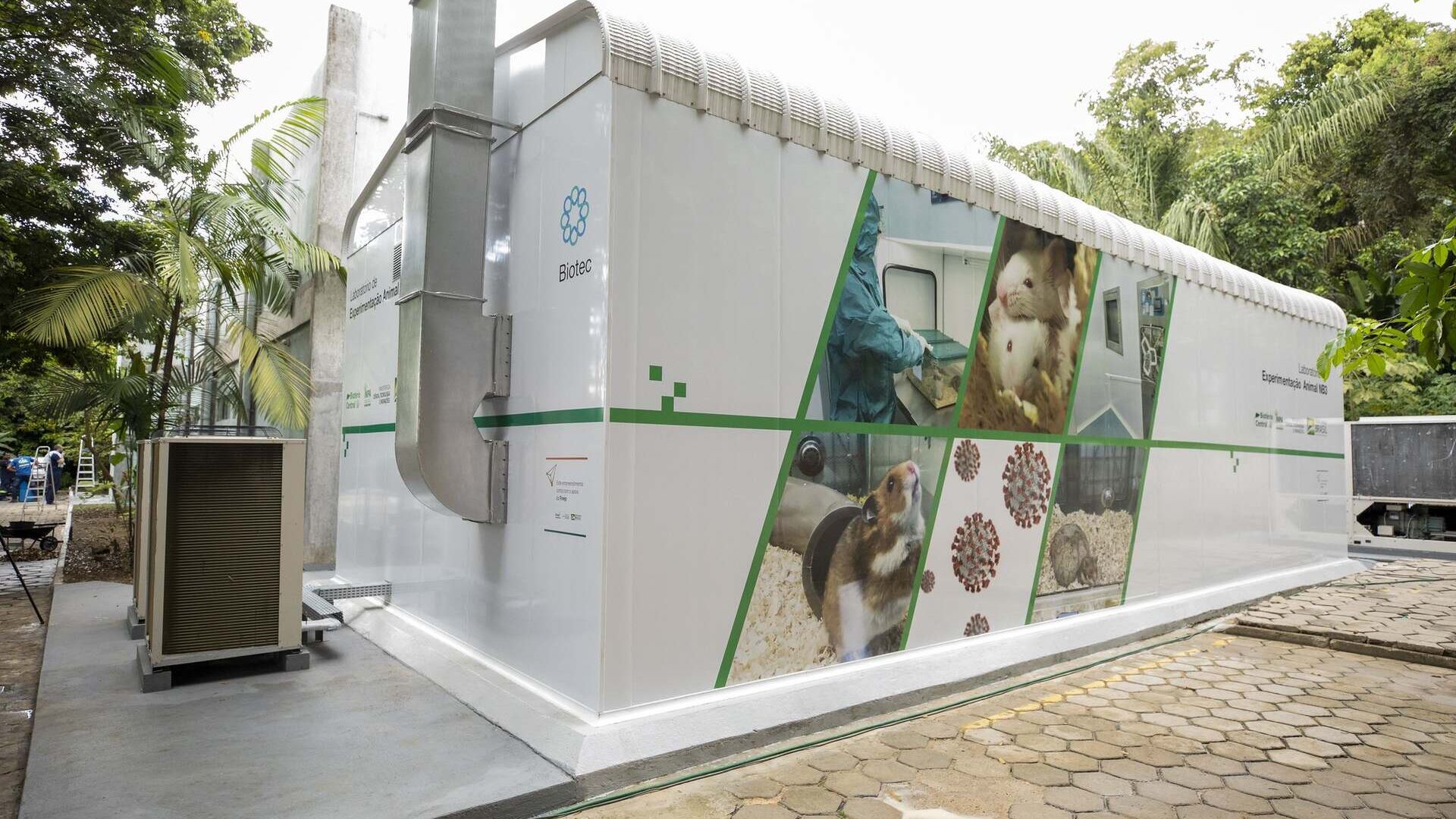Biology, computer science and engineering converge in Schällemätteli
The Department of Biosystems of the Polytechnic University of Zurich is ready in Basel in the innovative BSS building of the local Life Sciences Campus
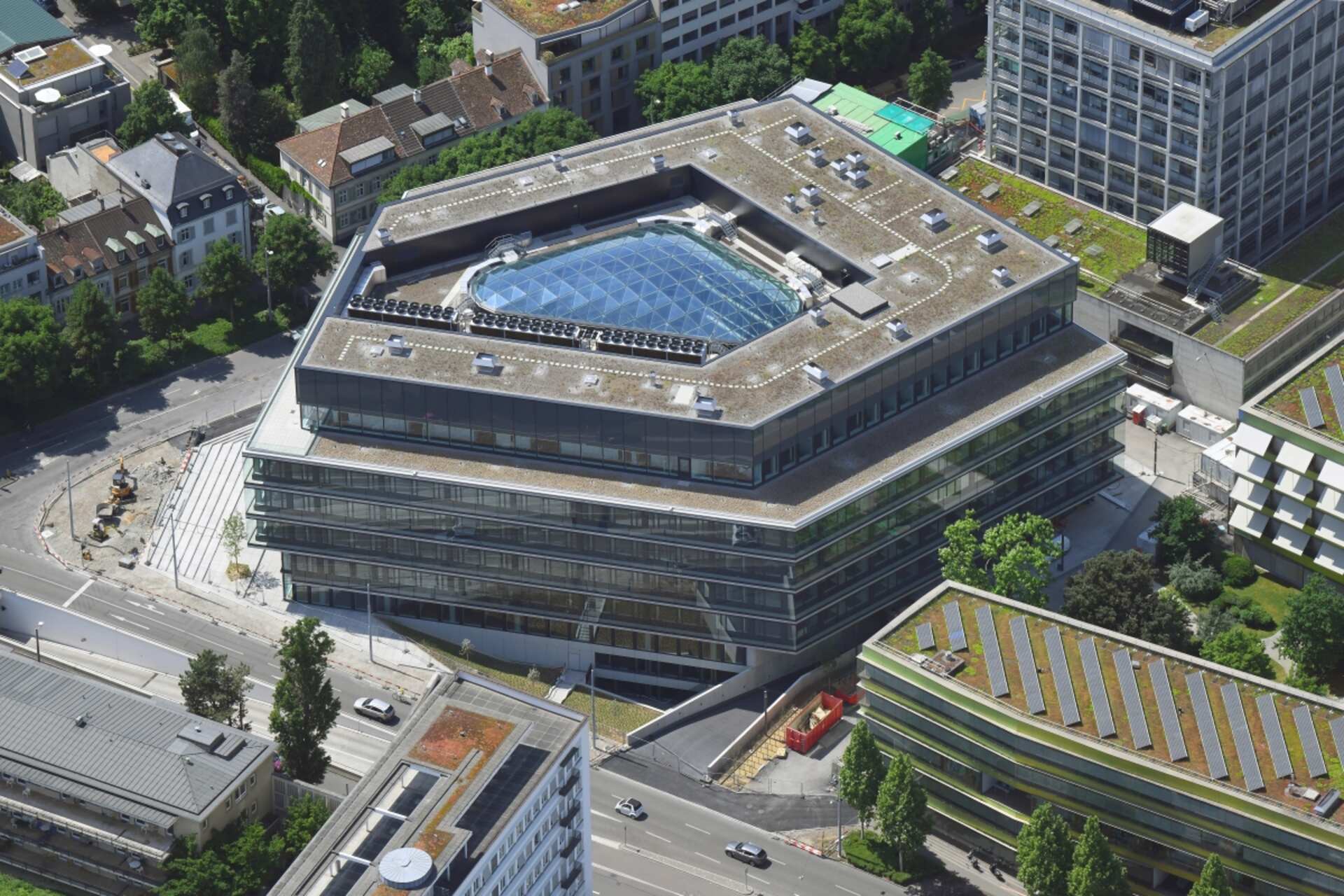
In Switzerland, the idea of ETH Zurich establishing a Department of Biosystems in Basel seemed unrealizable for a long time.
Today it finds its place in a new building where the lines between biology, computer science and engineering blur and researchers increasingly focus on medical applications.
An impressive view awaits the first visitors to the new BSS building.
Immediately after the reception area, you are immersed in a surprisingly light and airy space, an impressive atrium flooded with light and topped by a transparent glass roof.
At the end of this enormous entrance, a spiral staircase winds up to the upper floors.
The impression is that of an infinite number of connecting lines, but this is absolutely intentional: it is a stratagem deliberated by the architects to encourage communication and interaction between the research groups.
Right now, the lobby is crowded with backpacking students, some of whom make their way down the curving path to the cozy bistro.
Researchers waiting for the elevator stop for a short chat before going up to their workstations.
Single location and the BIOS+ brand for the IRB, IOR and EOC institutes
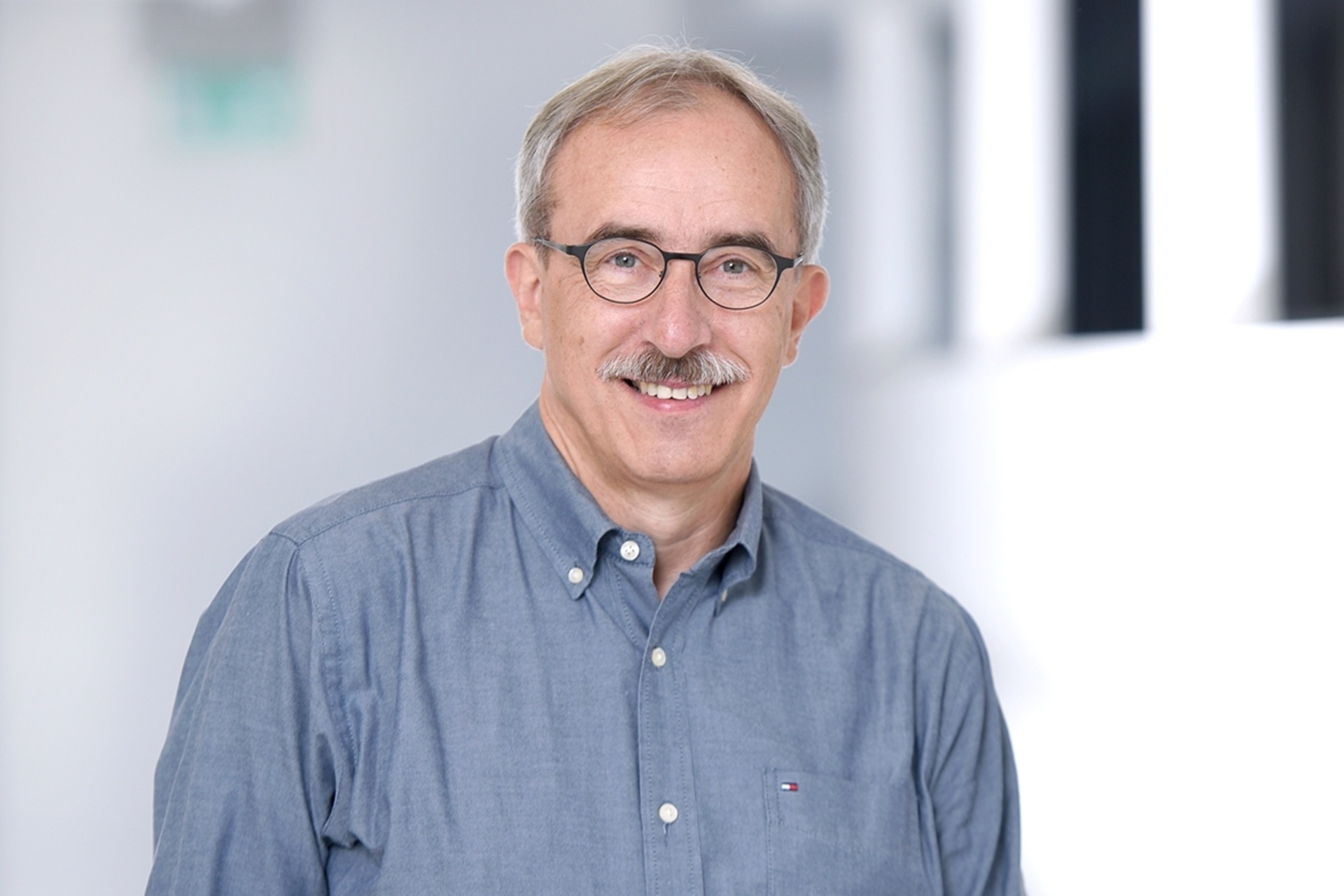
(Photo: ETH Zurich)
Renato Paro: “This building represents the culmination of an extraordinary journey”
In the center of the atrium there are Renato Paro e Sven Panke.
The former, now professor emeritus of molecular biology, is still visibly impressed by the architectural concept.
“When I walk into the BSS building and see all these offices, laboratories and common research platforms, it seems to me that all the time and effort we invested in creating our department was really worth it”He says.
Appointed as the first director of the nascent Center of Biosystems Science and Engineering (C-BSSE) in 2006, Renato Paro later became one of the driving forces in the creation of the Department of Biosystems Science and Engineering (D-BSSE) at ETH.
“For me this property represents the culmination of an extraordinary journey”, he claims.
Photogallery, the inauguration of the "Belli" research center
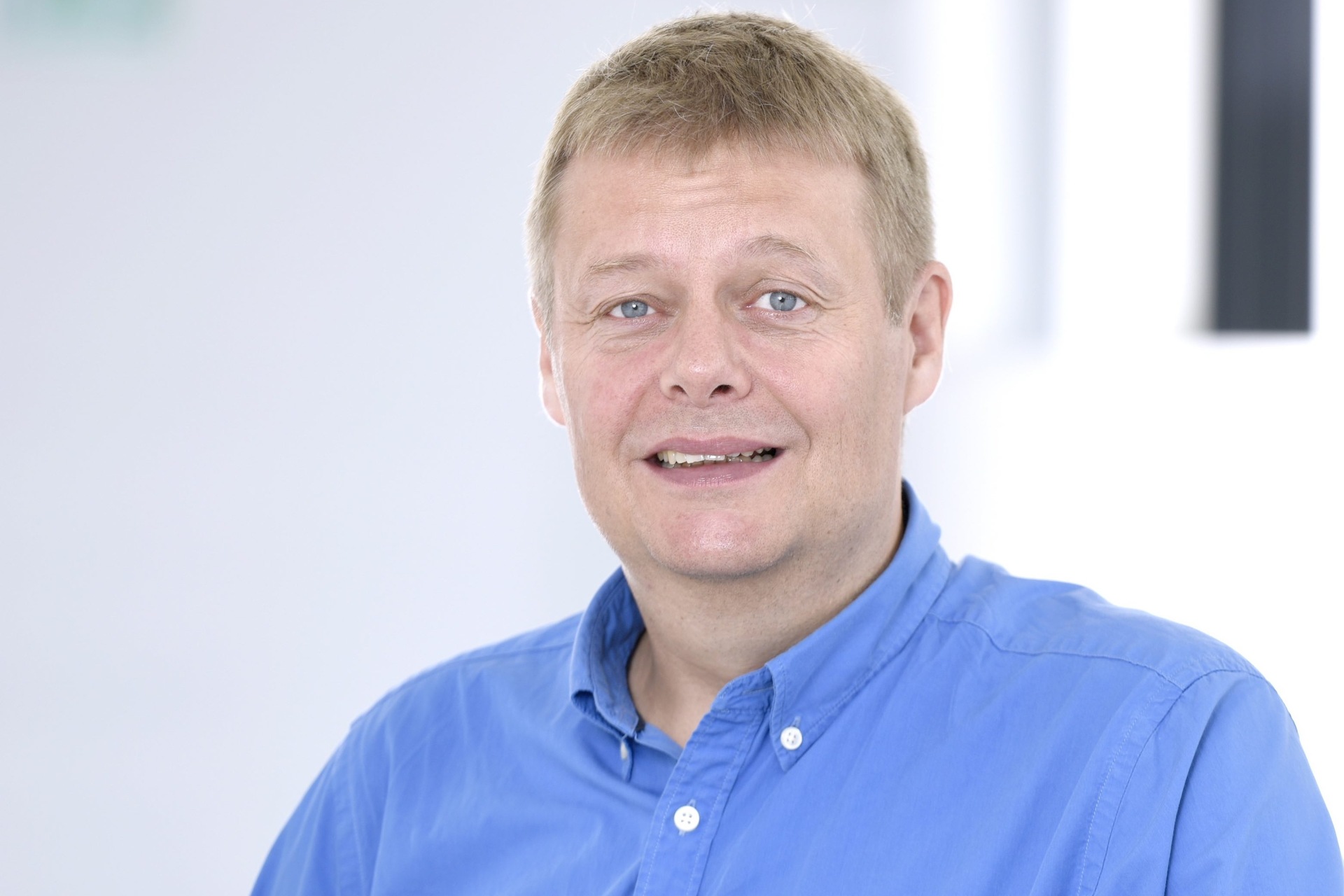
(Photo: ETH Zurich)
Sven Panke: “On each floor a mix of research groups rather than thematic areas”
“From the design stage, our goal was to create a building in which all the various components encouraged interaction and scientific exchange“, continues Panke.
This year he will take the reins of the department and nods often when he speaks, also underlining how all the professors present have constantly contributed to building something beautiful based on an original concept: “We decided that each floor should have a mix of research groups rather than organized by subject areas.”
Video, the "varnish" of the headquarters of the EOC, IOR and IRB institutes
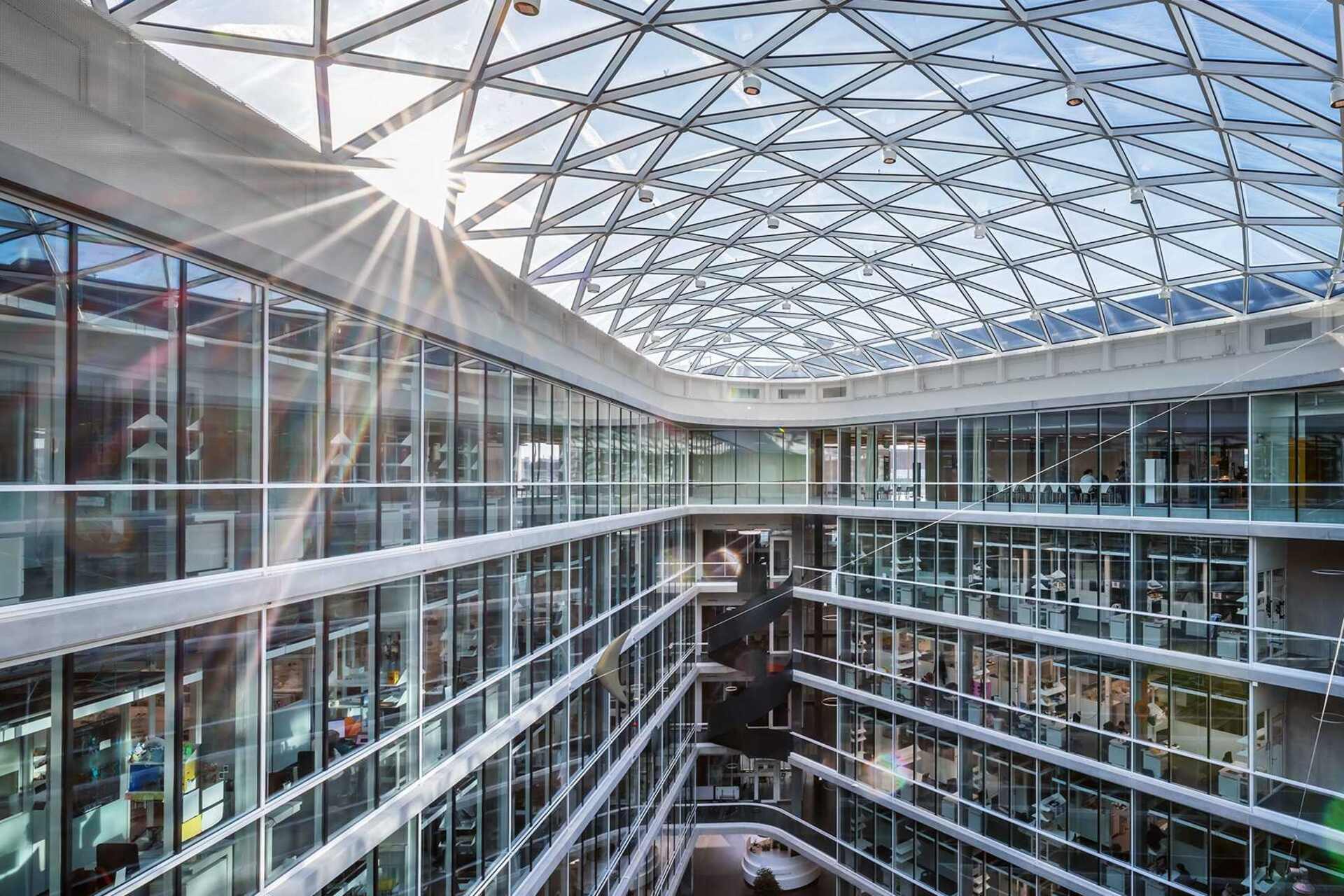
(Photo: Alessandro Della Bella/ETH Zurich)
Experimental biology, theoretical computational and bioengineering in close contact
The department is divided into three main areas (experimental biology, theoretical computational biology, and bioengineering), and each floor of the building houses a mix of experimental biologists, bioinformaticians, and bioengineers, working in adjacent offices and laboratories.
“We quickly realized that one of the main advantages of D-BSSE was to bring all three of these research areas under one umbrella to encourage groups to communicate with each other. And now that we're all under the same roof, it's even easier to mix and interact.", says Panke.
“This is interdisciplinarity in action, and it attracts researchers from all over the world".
In Bellinzona super pole of excellence in life sciences
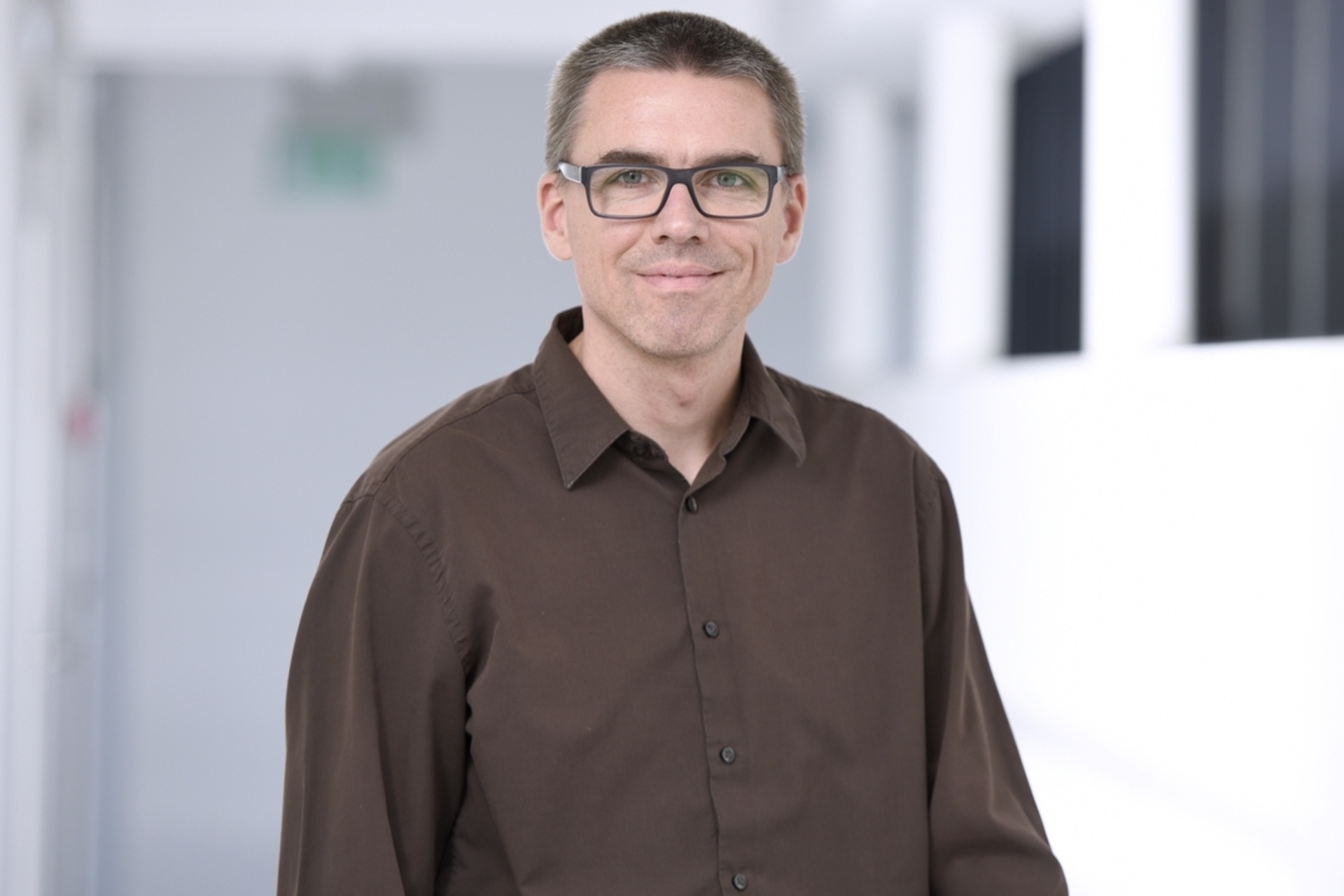
(Photo: ETH Zurich)
Researchers from 42 countries, the cases of Niko Beerenwinkel and Tanja Stadler
D-BSSE currently employs scholars from 42 different countries.
Sven Panke's bioprocess laboratory, for example, is on the same level as the group led by Niko Beerenwinkel.
Both are strong supporters of the department's special mission, which seeks to combine basic research in the life sciences with a mathematical and computer science approach, while also incorporating a technology and engineering component.
Panke specializes in miniaturization techniques for bioprocess engineering, which can be used to discover and synthetically control improved cell variants.
Beerenwinkel, on the other hand, combines mathematics, computer science and artificial intelligence with biology and medicine.
Applications of his computational methods include the ability to characterize and describe viral diseases at the molecular level.
His models have proven to be a very useful tool during the coronavirus pandemic.
Together with Tanja Stadler, professor of computational evolution at the D-BSSE and chair of the Swiss Scientific Advisory Group for COVID-19, he played an important role in efforts to identify new variants of the virus and to follow their evolution and spread.
In Lugano an innovative crossroads between human and natural sciences
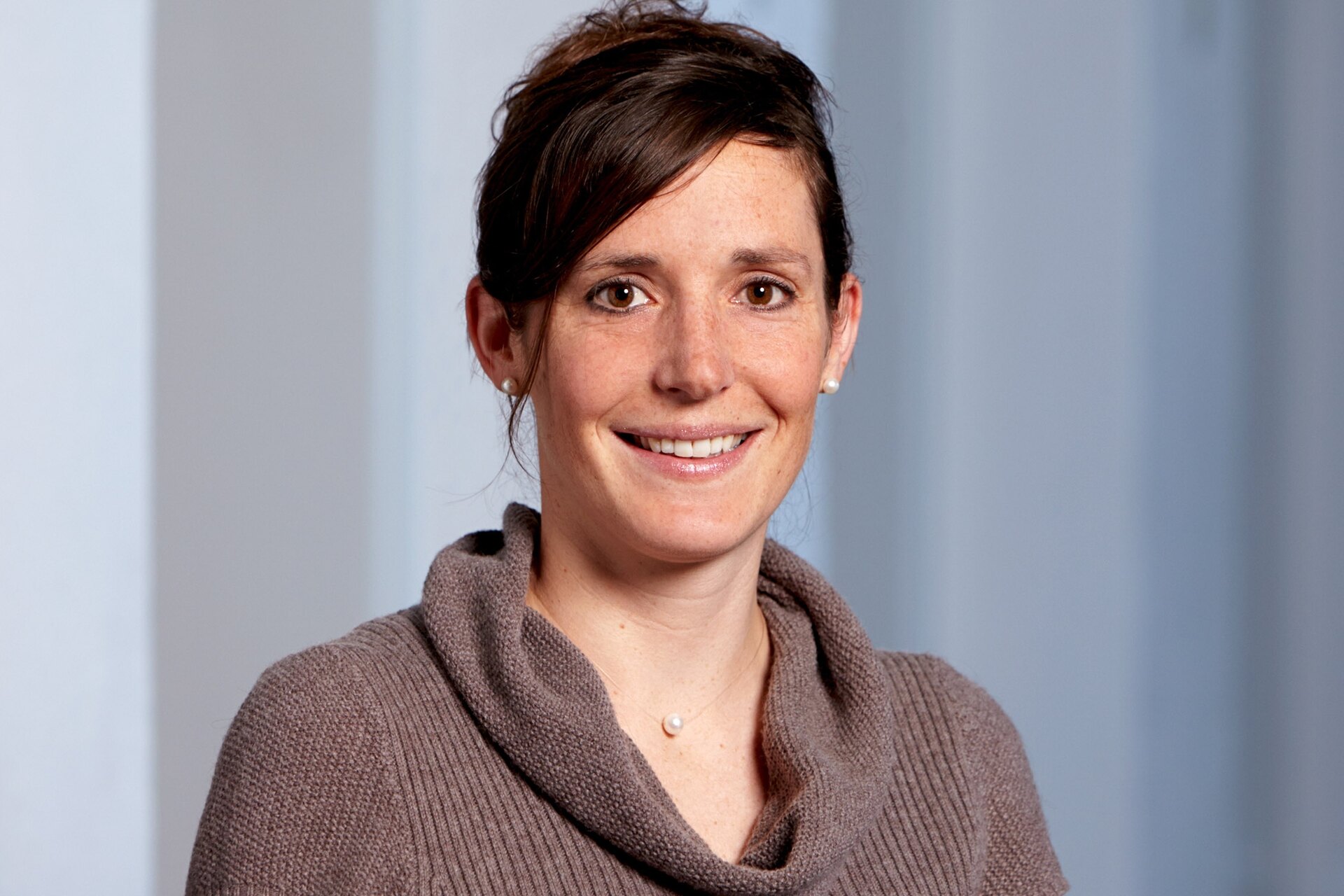
(Photo: ETH Zurich)
Cells, organoids and microorganisms with properties not found in nature
The work of D-BSSE researchers is based on the foundations of systems biology.
Its goal is to generate a holistic understanding of the functioning of cells, organs and organisms and the temporal and biochemical processes that keep them alive.
To study it, researchers typically use large data sets, generated by high-throughput technologies such as DNA sequencers, as well as mathematical models and computer simulations.
Systems biology also plays an important role in the second research line of the D-BSSE.
This is synthetic biology, the main goal of which is to produce cells, organoids and microorganisms with new properties not found in nature, many of which offer potential medical benefits.
The tallest skyscraper in Switzerland is a temple of innovation
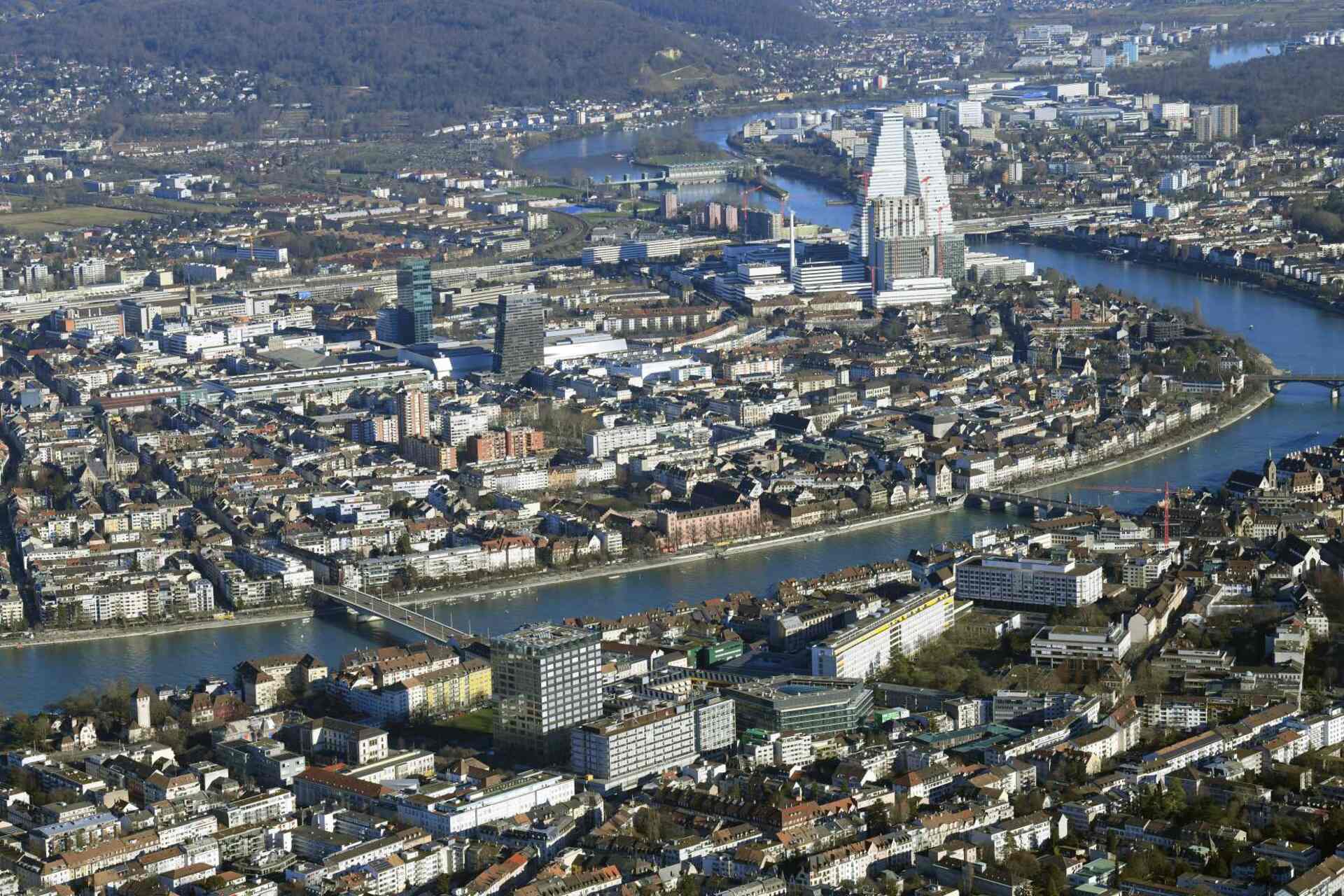
(Photo: Erich Meyer)
The leads: vaccines and antibodies for synthetic immunology and lab-on-chip technologies
D-BSSE's work in bioengineering, which uses DNA to regulate cells and organisms, has an equally practical goal.
Concrete results of this research include vaccines and antibodies for synthetic immunology, as well as cell implants that can help combat metabolic disorders, and miniaturized platforms such as lab-on-chip technologies.
“Two of the pioneering areas of work of our Basel department are bioengineering and computational data science”, says Panke, who has been part of the Department of Biosystems Science and Engineering since 2009.
“It makes sense that we also show our students the benefits of combining these two components.”
Video, the futuristic Tower 2 of the Roche headquarters in Basel

(Photo: Alessandro Della Bella/ETH Zurich)
An ETH idea germinated in 2000 despite the skepticism of the Zurich press
The idea of creating a bioscience research institute at ETH Basel began to germinate in 2000.
Looking back, it's clear how bold this vision was.
Equally astute was the decision of ETH Zurich to transform the D-BSSE into a separate department in Basel in 2007 and to provide it with secure long-term funding.
Naturally, the evolution of the Department of Biosystems Science and Engineering has not always been a bed of roses: in 2003, for example, the Neue Zürcher Zeitung reported in some articles that the project to create an ETH outpost in the Rhineland city was encountering difficulty.
The newspaper expressed amazement at ETH Zurich's plans to create a full-fledged bioengineering or biomedical engineering department in Basel: “Such a grand idea seems almost unachievable.”
But the journalists' skepticism proved unfounded.
Innovation and life sciences? Future… “little treasure” of the Aargau
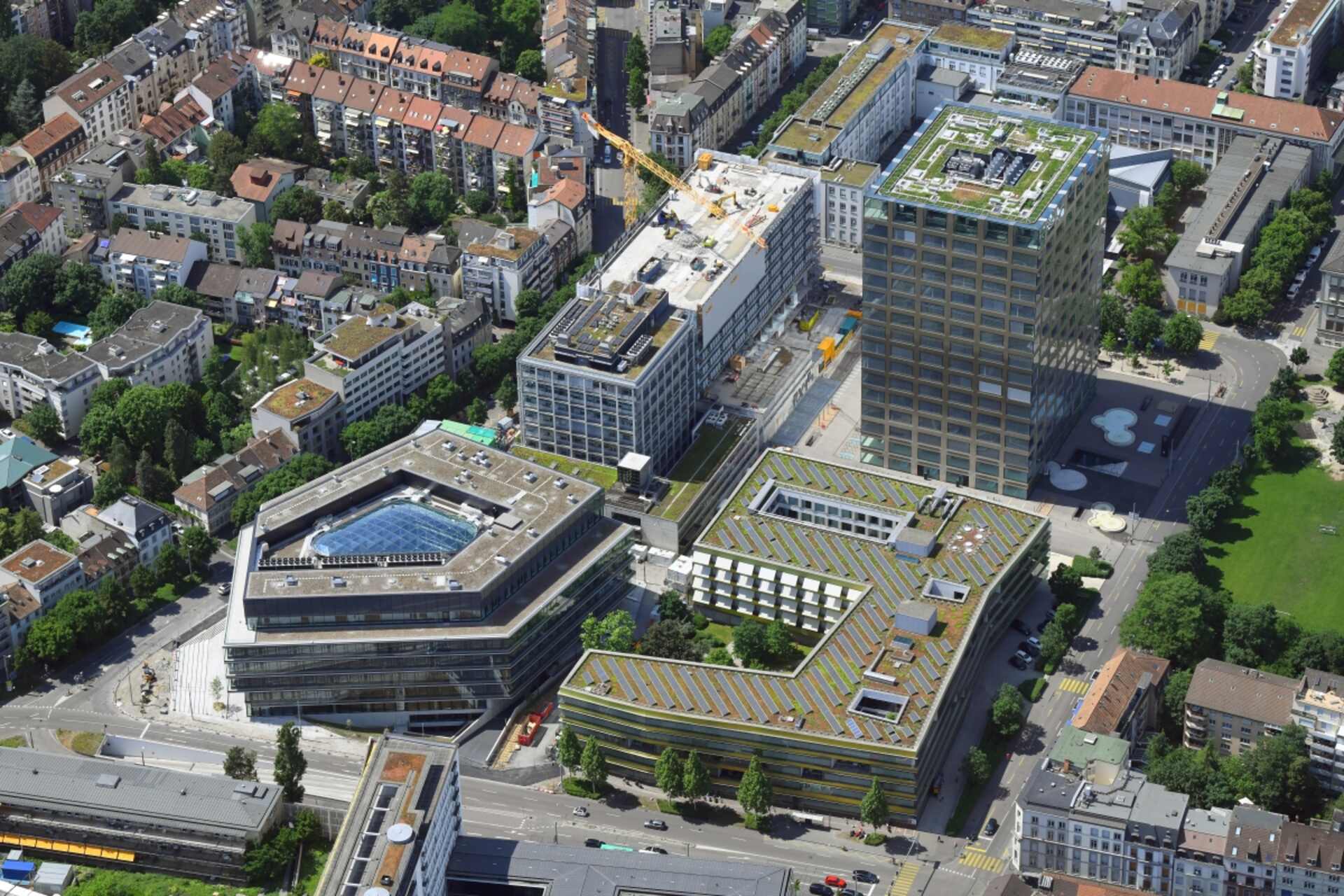
(Photo: Erich Meyer)
From the Rosental site to the BSS building of the current Life Sciences Campus
The next phase of the development of the D-BSSE occurred with the move from the Rosental location to the BSS building on the Schällemätteli Life Sciences Campus.
As systems biology and synthetic biology gain traction and knowledge in these areas continues to advance, there is an increasing emphasis on translating basic research findings into medical applications.
“Today, systems biology often has such a deep understanding of how a cell works that it can provide most of the information for controlling key processes within the cell.”, explains Paro.
“Using this expertise, synthetic biologists can reprogram a cell to perform a new task. In the future, these reprogrammed cells could be used for therapeutic purposes."
4,2 billion francs more from the Sisslerfeld development hub
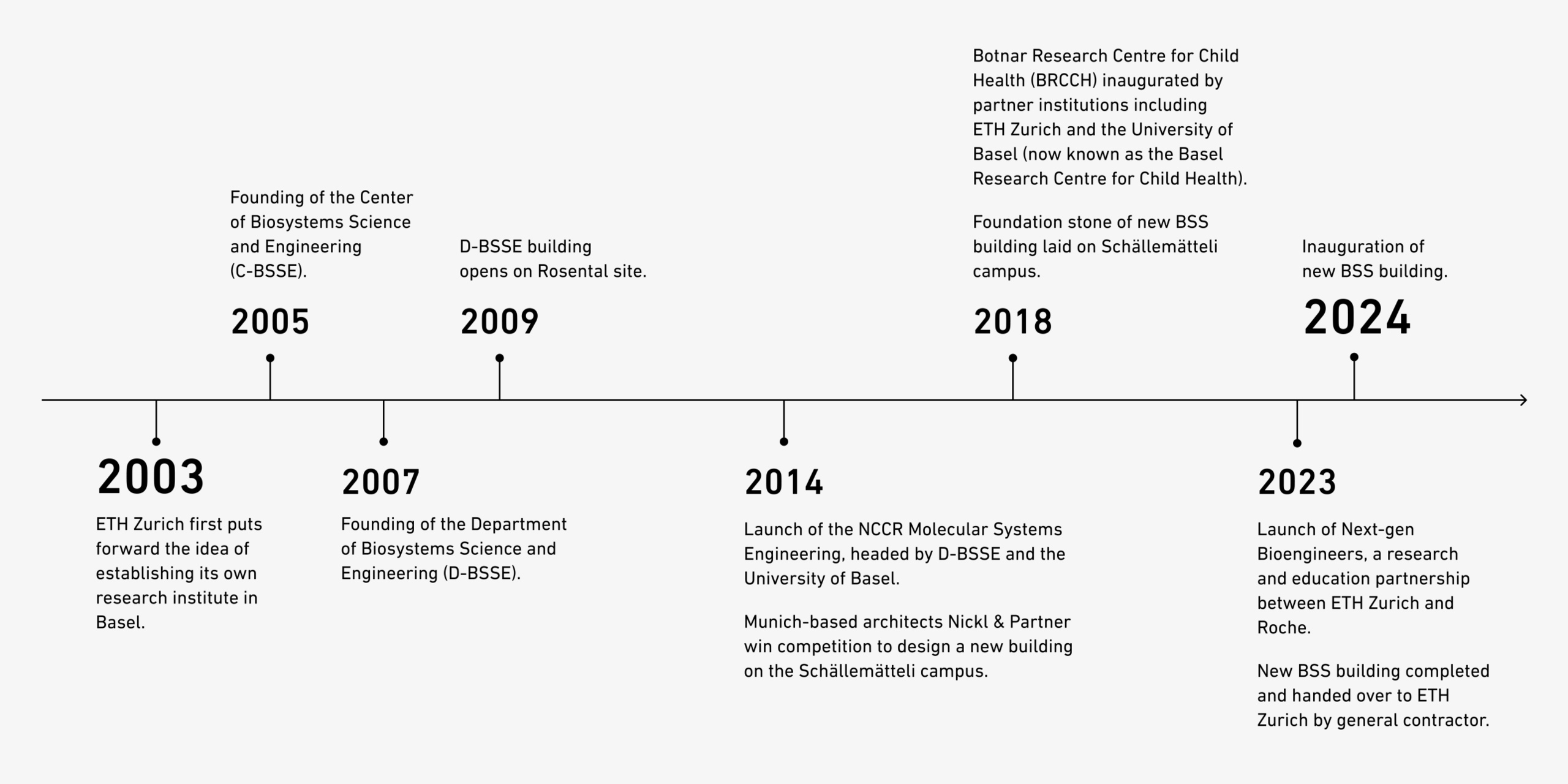
(Illustration: ETH Zurich)
The success of translational research in Good Manufacturing Practice frameworks
But such cells can only be used in patients if produced in compliance with the strictest pharmacological standards.
Before the move, the D-BSSE did not have the necessary infrastructure for this purpose, but the new BSS building is equipped with a GMP, i.e. Good Manufacturing Practice, facility.
“This means we can now move to the translational phase of our research”, says Paro.
“By working under GMP conditions, we can improve the reprogrammed cells and purify them so they can be used in clinical trials.”
How much is the Life Science sector worth in Italian-speaking Switzerland?
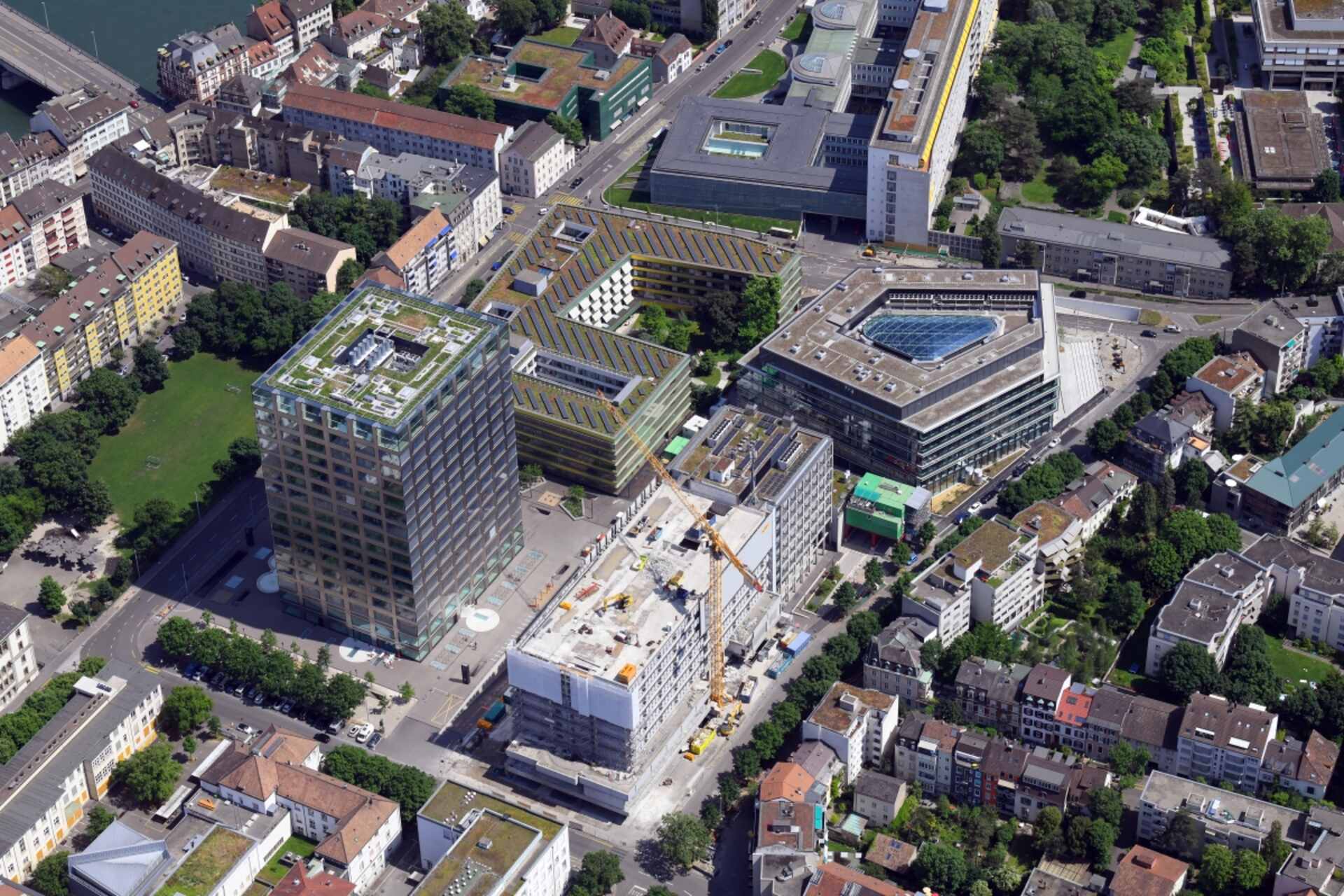
(Photo: Erich Meyer)
Medical treatment with the help of the University and University Hospital of Basel
The new GMP or Good Manufacturing Practice structure is managed by ETH Zurich in collaboration with the University of Basel and University Hospital Basel.
It provides researchers with a rigorously controlled environment to produce gene, cell and tissue therapy products that meet regulatory requirements for human clinical trials.
This evolution towards translational research was also facilitated by the new location of the D-BSSE on the Life Sciences Campus in Schällemätteli, which is located in the immediate vicinity of the University Hospital Basel, the University Children's Hospital Basel and the Biozentrum of the University of Basel.
The Department of Biomedicine at the University of Basel and the Research Center for Child Health in the Rhineland city are also planning to build new premises nearby.
This proximity should further accelerate the translation of biological research into medical applications.
The new building of the Federal Institute of Technology in Zurich within the Life Sciences Campus of Schällemätteli: the innovative headquarters of the D-BSSE (Department of Biosystems Science and Engineering), in the shape of a pentagon, is close to the Biozentrum, the Pharmazentrum, at the DBM as well as at the Children's Hospital and the University Hospital of Basel (Photo: Erich Meyer)
The new building of the Federal Institute of Technology in Zurich within the Life Sciences Campus of Schällemätteli: the innovative headquarters of the D-BSSE (Department of Biosystems Science and Engineering), in the shape of a pentagon, is close to the Biozentrum, the Pharmazentrum, at the DBM as well as at the Children's Hospital and the University Hospital of Basel (Photo: Erich Meyer)
The new building of the Federal Institute of Technology in Zurich within the Life Sciences Campus of Schällemätteli: the innovative headquarters of the D-BSSE (Department of Biosystems Science and Engineering), in the shape of a pentagon, is close to the Biozentrum, the Pharmazentrum, at the DBM as well as at the Children's Hospital and the University Hospital of Basel (Photo: Erich Meyer)
The new building of the Federal Institute of Technology in Zurich within the Life Sciences Campus of Schällemätteli: the innovative headquarters of the D-BSSE (Department of Biosystems Science and Engineering), in the shape of a pentagon, is close to the Biozentrum, the Pharmazentrum, at the DBM as well as at the Children's Hospital and the University Hospital of Basel (Photo: Erich Meyer)
The new building of the Federal Institute of Technology in Zurich within the Life Sciences Campus of Schällemätteli: the innovative headquarters of the D-BSSE (Department of Biosystems Science and Engineering), in the shape of a pentagon, is close to the Biozentrum, the Pharmazentrum, at the DBM as well as at the Children's Hospital and the University Hospital of Basel (Photo: Erich Meyer)
The new building of the Federal Institute of Technology in Zurich within the Life Sciences Campus of Schällemätteli: the innovative headquarters of the D-BSSE (Department of Biosystems Science and Engineering), in the shape of a pentagon, is close to the Biozentrum, the Pharmazentrum, at the DBM as well as at the Children's Hospital and the University Hospital of Basel (Photo: Erich Meyer)
The new building of the Federal Institute of Technology in Zurich within the Life Sciences Campus of Schällemätteli: the innovative headquarters of the D-BSSE (Department of Biosystems Science and Engineering), in the shape of a pentagon, is close to the Biozentrum, the Pharmazentrum, at the DBM as well as at the Children's Hospital and the University Hospital of Basel (Photo: Erich Meyer)
The BSS building of the Life Sciences Campus of the Federal Institute of Technology Zurich in Basel
Everything about the Department of Biosystems Science and Engineering at the ETH Zurich in Basel
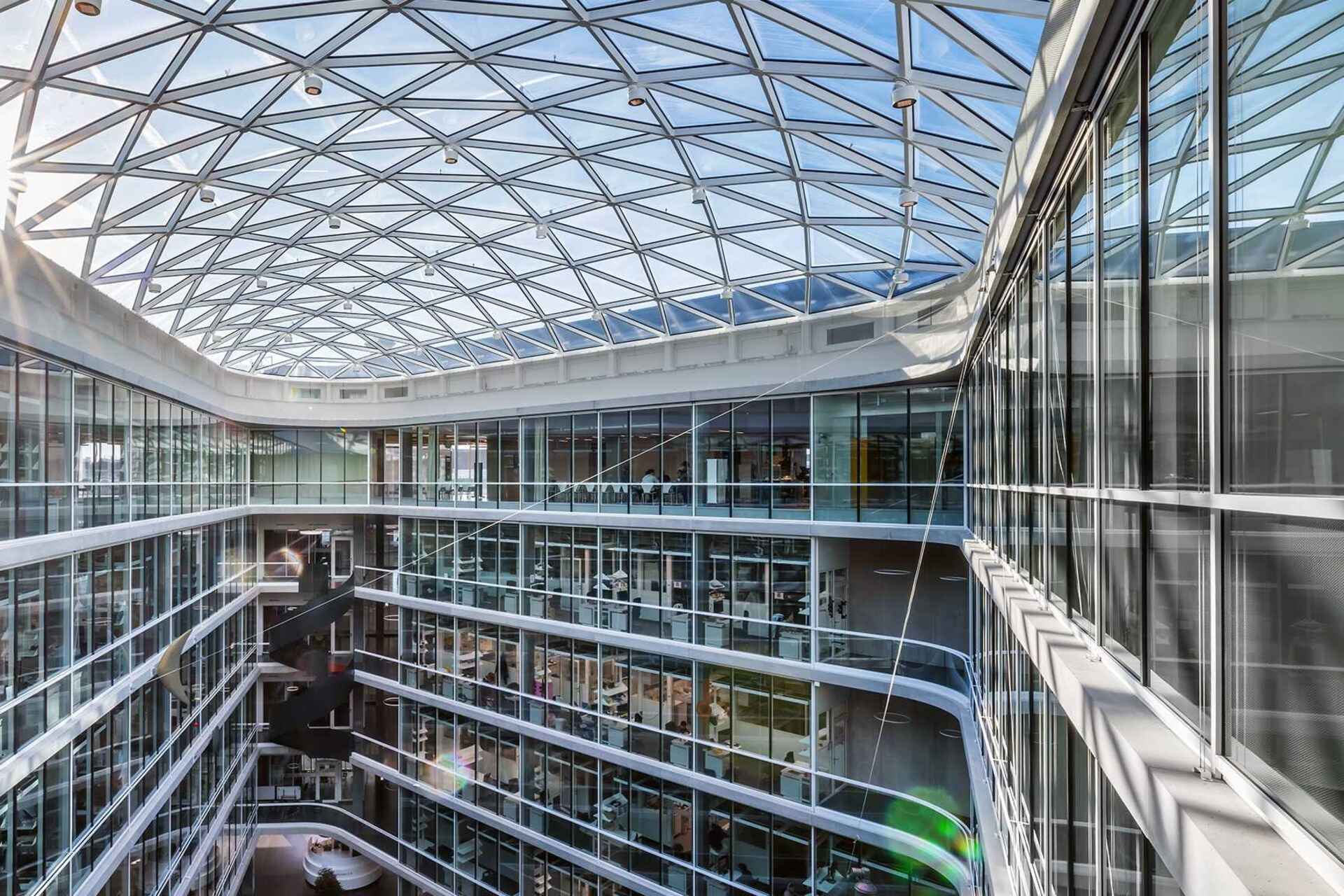
You may also be interested in:
In Brazil the first meeting in the world between biosafety and synchrotrons
In Campinas, a NB4 level maximum biological containment laboratory will be connected to the light sources of a particle accelerator
In Alto Adige today EDIH NOI is the new point of reference for AI
4,6 million euros from the PNRR fund will be allocated to Bolzano for services to local companies in the digitalisation of intelligence…
by Editorial staff Innovando.NewsEditorial staff of Innovando.News
Austria, Germany and Switzerland for "more innovative" cargo railways
DACH Ministers Leonore Gewessler, Volker Wissing and Albert Rösti: the introduction of Digital Automatic Pairing is a key element
by Editorial staff Innovando.NewsEditorial staff of Innovando.News
Persuasion or manipulation? Genesis and historical impact of PR
This is how Public Relations, from the sophistic dialogue of ancient Greece to the current digital era, continues to offer continuous innovation

